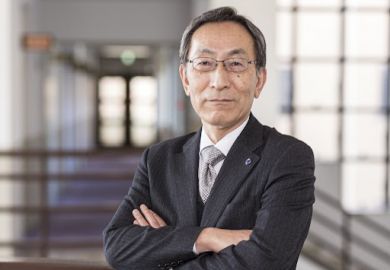Enrolment on PhDs has increased by 60 per cent in India over the past five years, according to new data.
Education minister Ramesh Pokhriyal Nishank called the rise, reported in the All India Survey on Higher Education, “heartening”. India plans to greatly boost innovation with a 500 billion rupee (£5 billion) National Research Foundation announced this year.
The survey, released this month, showed growth across almost all key higher education metrics, in line with the goals of the 2020 National Education Policy (NEP), which aims to double the size of the higher education sector over two decades.
The number of universities rose by 30.5 per cent from 2015-16 to 2019-20: today, the country counts 1,043 universities, 42,343 colleges and 11,779 stand-alone higher education institutions. Among those, the number of “institutions of national importance” increased from 75 to 135.
The number of higher education students grew 12.6 per cent, or from 34.2 million in 2014-15 to 38.5 million in 2019-20. One goal of the NEP is to bring the current GER of 27 per cent to 50 per cent by 2035.
The number of women heading into higher education grew by 18.2 per cent over five years and, for the second straight year, female enrolment (27.3 per cent) was proportionately higher in 2019-20 than male enrolment (26.6 per cent).
However, the total number of male students still exceeds female students because of a gender imbalance in the country’s birth rates. Male students still dominate at the elite institutions of national importance.
Amit Khare, India’s secretary of higher education, said that “the continuous rise in enrolment, the number of institutions and gender parity is part of our country’s major move towards improving access, equity and quality in light of NEP 2020”.
In terms of specific fields of study, medical sciences saw the largest growth (51.1 per cent), followed by science (13.5 per cent), commerce (8.5 per cent) and IT (4.2 per cent). The arts, humanities and social sciences held steady, while interest in more traditional engineering fields dropped.





